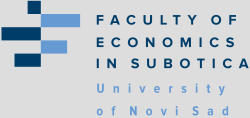Business Perspectives of Free Zones in the New Normal
DOI:
https://doi.org/10.46541/978-86-7233-397-8_136Keywords:
Free zone, new normal, tradeAbstract
The COVID-19 pandemic has caused a slowdown in the economic growth of the economies around the world, a reduction in the level of international trade due to the rise of national barriers, a drop in investment, etc. Free zones, like other actors in global supply chains, face challenges arising from this specific situation. However, as they represent separate and fenced parts of the territory of a certain country, and in that sense enjoy customs extraterritoriality, they are able to adapt in a unique way to business in the new normal. With quick and flexible reactions, using its special status in the conditions of closing borders and restricting the movement of goods, most free zones managed to maintain the continuity of their trade flows. There are 15 active free zones in the Republic of Serbia. Before the outbreak of the pandemic, their total annual turnover was about 5 billion euros, and the export of goods was about 13% of the total export of the country. The aim of this paper is to point out that adjusting the business of free zones to the new normal is of exceptional importance for the Republic of Serbia, because they represent one of the most important instruments of the policy of attracting foreign investments, regional development, employment growth, exports, etc. The fact that the Republic of Serbia offers the greatest benefits to companies in free zones in relation to all countries in the region speaks in favor of that.



